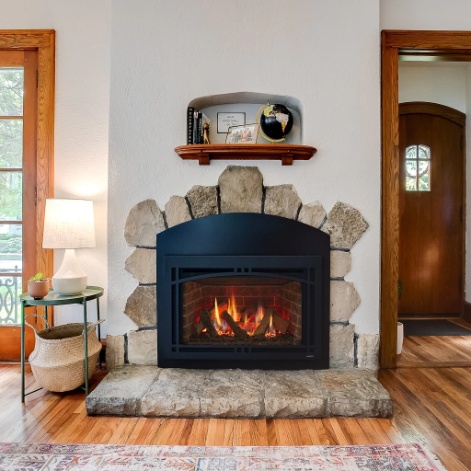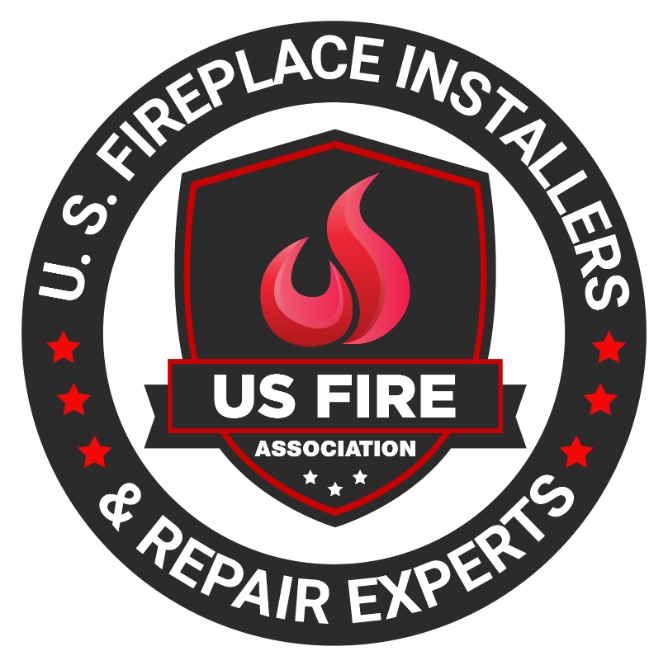Table of Contents
Have you ever wondered if you can pour water on you fireplace in case of emergencies?
We will explore the types of fireplaces that allow water, such as gas, electric, and bioethanol fireplaces.
Not all fireplaces are safe to expose to water, including wood-burning, pellet stoves, and coal fireplaces.
Discover what happens if water is poured on different types of fireplaces and learn about alternative methods like using a fire extinguisher, baking soda, salt, sand, or a fire blanket.
Stay informed and prepared for any fireplace-related emergencies.
Can Water Be Used On Fireplaces?
When it comes to fireplaces, the question of using water arises due to safety concerns and potential hazards associated with improper usage.
While water can be effective in extinguishing some types of fires, using it on a fireplace can create additional risks. Sprinkling water on a fire within a fireplace can lead to steam explosions, cracking of the materials, or spreading the fire due to the sudden temperature change.
To mitigate these dangers, it’s crucial to familiarize oneself with proper fireplace maintenance tasks and safety precautions. Regularly inspecting the chimney, ensuring proper ventilation, and using a spark guard are essential steps to prevent accidents. Having a fire extinguisher nearby and knowing how to use it can be life-saving in case of emergencies.
What Types Of Fireplaces Allow Water?
Certain types of fireplaces, such as gas, electric, and bioethanol fireplaces, are designed to safely interact with water without posing significant risks.
Gas fireplaces typically have sealed combustion systems that prevent water from entering the unit, ensuring safe operation.
Electric fireplaces utilize advanced technology to mimic the look of real flames without producing actual heat, making them perfectly safe to use around water sources.
Bioethanol fireplaces feature clean-burning fuel that emits minimal emissions, reducing the need for extensive cleaning compared to traditional wood-burning fireplaces.
These modern fireplace options provide flexibility and convenience while prioritizing safety and ease of maintenance.
Gas Fireplaces
Gas fireplaces are a popular choice for households seeking convenience and safety, as they can be safely exposed to water for extinguishing flames and ensuring proper maintenance.
In the event of a fire in a gas fireplace, using water to extinguish flames is generally not recommended as it can lead to potential hazards, such as steam explosions or spreading of the fire due to the reaction with hot surfaces.
Instead, it is advised to utilize a fire extinguisher specifically designed for gas fires or to shut off the gas supply and allow the fire to burn out.
To maintain the optimal performance of a gas fireplace, regular inspections by a certified technician are crucial to check for any leaks, blockages, or other issues that may compromise safety.
Electric Fireplaces
Electric fireplaces offer a modern and versatile heating solution that permits the use of water for safety measures and maintenance without risking damage or hazards.
Many electric fireplaces are designed with safety mechanisms in place to protect against the potential risks of exposure to water. These safety features often include sealed electrical components, waterproof casings, and grounded plugs to ensure that any contact with water does not lead to electric shocks or malfunctions.
When it comes to maintenance, utilizing water in cleaning an electric fireplace can be beneficial as long as the proper procedures are followed. It is important to disconnect the fireplace from the power source before cleaning and to use a damp cloth or mild soapy water to gently wipe down the surface, avoiding any direct contact with electrical components. By following these guidelines, electric fireplaces can be safely exposed to water for maintenance purposes without adverse effects.
Bioethanol Fireplaces
Bioethanol fireplaces provide a sustainable and eco-friendly heating option that allows for the controlled use of water to extinguish flames and maintain safety standards.
One of the unique characteristics of bioethanol fireplaces is their ability to be safely extinguished with water due to the nature of the bioethanol fuel. It is crucial to follow certain safety precautions when using water with bioethanol.
Before extinguishing the flames, ensure that the fireplace is cool to the touch and the fuel reservoir is not hot. Always use a spray bottle or damp cloth to apply water, avoiding direct pouring, which can lead to flare-ups or spreading of flames. Remember to only use water in emergency situations and refer to the manufacturer’s guidelines for safe operation and maintenance of your bioethanol fireplace.
What Types Of Fireplaces Should Not Be Exposed To Water?
Unlike gas, electric, and bioethanol fireplaces, wood-burning, pellet stoves, and coal fireplaces are not suitable for water exposure due to the risks of damage and potential hazards.
Adding water to a wood-burning, pellet stove, or coal fireplace can lead to the creation of steam, which may cause cracking or shattering due to the extreme temperature differences. Water can also exacerbate fire risks by spreading hot embers or causing steam explosions. To safely extinguish flames in these types of fireplaces, it is recommended to use a Class A fire extinguisher or a fire blanket.
Regularly cleaning ashes and ensuring proper ventilation are essential practices to maintain the safety and efficiency of wood-burning, pellet stoves, and coal fireplaces.
Wood-Burning Fireplaces
Wood-burning fireplaces pose a fire hazard when exposed to water, as the moisture can lead to potential damage and safety issues, necessitating caution and alternative fire extinguishing methods.
Water should not be used on wood-burning fireplaces due to the risk of causing cracks and weakening the structural integrity of the masonry and metal components. In addition, when water comes into contact with hot embers or coals, it can create steam that may lead to dangerous steam burns or even a sudden flare-up.
To properly maintain a wood-burning fireplace, it is crucial to regularly inspect and clean the chimney to prevent potential fire hazards. When extinguishing a fire, safer alternatives include using a fireplace shovel to spread out the embers and then covering them with a layer of fireplace ash or sand to smother the flames effectively.
Pellet Stoves
Pellet stoves are not designed for water exposure, as the combustible nature of pellets and the design of these stoves make them unsuitable for wet conditions or moisture contact.
The use of water on pellet stoves can pose serious risks due to the flammable nature of pellets, potentially leading to fires or malfunctions. When water comes into contact with the hot components of a pellet stove, it can cause steam, rapid temperature changes, and potentially damage the stove’s internal mechanisms. To ensure safety, it is crucial for pellet stove owners to avoid using water for cleaning or extinguishing fires. Instead, a specialized vacuum cleaner or approved cleaning tools should be used for maintenance to prevent any accidents.
Coal Fireplaces
Coal fireplaces are not compatible with water usage, as the properties of coal and the structure of these fireplaces can lead to safety risks and potential damage if exposed to water.
When you pour water onto a coal fire, it can cause the coal to release flammable gases, leading to sudden flare-ups or even explosions. This poses serious risks to anyone nearby and can significantly worsen the situation.
To safely maintain a coal fireplace, it’s essential to use proper fire extinguishing methods such as dry chemical fire extinguishers or sand. These options effectively smother the fire without the dangerous reactions that water can trigger. Always make sure to follow manufacturer guidelines and keep a safe distance when dealing with coal fires to avoid potential accidents or injuries.
What Happens If Water Is Poured On A Fireplace?
The effects of pouring water on different types of fireplaces vary, with potential risks and outcomes depending on the fireplace’s design, fuel source, and safety features.
- For gas fireplaces, water can disrupt the gas supply, potentially causing a dangerous gas leak.
- Electric fireplaces may short circuit and pose electric shock hazards when exposed to water.
- If you do not properly maintain bioethanol fireplaces, adding water can cause them to emit toxic fumes.
- Wood-burning and pellet stoves face the risk of coals extinguishing suddenly, leading to smoke backdrafts.
- Water interacting with coal fireplaces can create hazardous steam and heat buildup, increasing the risk of structural fires and chimney damage.
Gas Fireplaces
When you pour water on gas fireplaces, it immediately extinguishes the flame, but you must take precautions to prevent water damage and ensure proper operation.
It is essential to avoid splashing water directly onto the flames or gas burner to prevent potential gas leaks or damage to the fireplace components. Instead, use a damp cloth or sponge to gently clean the exterior of the fireplace.
After any accidental exposure to water, it is crucial to allow the fireplace to dry completely before attempting to relight it. Regular maintenance and inspection of the gas fireplace by a professional technician can help detect any potential issues that may have arisen from water exposure.
Electric Fireplaces
Water poured on electric fireplaces can lead to short circuits and electrical hazards, necessitating caution and adherence to safety guidelines to prevent damage and ensure user safety.
One of the main risks associated with water exposure on electric fireplaces is the potential for damaging the electrical components, which can result in malfunctions and pose a safety threat. It’s crucial to avoid direct contact between water and the fireplace to mitigate these risks. Safety precautions such as keeping liquids away from the fireplace area and ensuring a dry environment are essential. Regular maintenance, such as checking for any signs of water damage or leaks, can help preserve the integrity of the fireplace and extend its lifespan.
Bioethanol Fireplaces
For bioethanol fireplaces, if you pour water, it may dilute the ethanol fuel, reducing the flame’s intensity and causing it to extinguish. However, take precautions to prevent water damage and ensure safe operation.
It is vital to understand that water exposure can impact the combustion process of bioethanol fireplaces. When you dilute ethanol fuel with water, it affects the fuel-air mixture, potentially leading to inefficient burning and a shorter flame life.
As a result, users should be cautious when attempting to extinguish the flame using water, as this action can disrupt the functionality of the fireplace. To maintain the effectiveness and safety of bioethanol fireplaces, you should strictly follow the manufacturer’s guidelines and avoid introducing water directly into the fuel reservoir. Regular inspection and cleaning of the fireplace components can also help prevent any potential damage caused by water exposure.
Wood-Burning Fireplaces
Water poured on wood-burning fireplaces can generate steam rapidly, leading to potential hazards, structural damage, and safety concerns, highlighting the importance of avoiding water exposure.
When you introduce water to a hot wood-burning fireplace, the intense heat vaporizes it almost instantly, creating massive amounts of steam. This sudden surge in steam can result in violent eruptions, spewing hot embers and ash, posing a significant risk of injury or burns. The thermal shock caused by pouring water on a hot fireplace can weaken the masonry or metal components, potentially leading to structural damage.
To safely extinguish a wood-burning fire, it’s advisable to use non-water methods such as a fire extinguisher, sand, or a commercial fireplace extinguishing product. These alternatives effectively smother the flames without causing the dangers associated with water contact.
Pellet Stoves
Water poured on pellet stoves can cause pellets to swell and emit steam, potentially leading to stove damage, blockages, and safety hazards, warranting careful handling to prevent accidents.
When water comes into contact with pellets, they can lose their integrity, turning soft and clumping together. This not only affects the combustion process but also poses a risk of clogging the stove’s system. To ensure safe operation, it is crucial to keep pellets dry and stored in a cool, dry place.
Regular maintenance of the stove, including cleaning out the ash and checking for any signs of water damage, is essential to prevent potential hazards and maintain the efficiency of the stove.
Coal Fireplaces
Water poured on coal fireplaces can create steam, heat, and potential hazards due to the coal’s properties, emphasizing the need for caution and adherence to safety guidelines to prevent accidents.
When water interacts with hot coal, it rapidly turns into steam, intensifying the heat and potentially causing unforeseen consequences. The sudden increase in temperature can lead to fracturing of the coal and even explosions, putting individuals at risk of burns or other injuries.
To mitigate these risks, handle water carefully around coal fireplaces, ensuring you use small quantities cautiously. Regular maintenance checks to detect any issues with the fireplace can help prevent hazards and keep the area safe for use.
What Are The Alternatives To Using Water On A Fireplace?
Instead of water, you can use various alternatives like fire extinguishers, baking soda, salt, sand, and fire blankets effectively to combat fireplace flames safely and efficiently.
- Fire extinguishers, designed specifically to combat fires, are handy tools that are compact and easy to use in case of a fireplace emergency.
- Baking soda, with its ability to starve a fire of oxygen, can swiftly smother small flames.
- Salt is another useful option, especially for grease fires, as it helps to extinguish such fires effectively.
- Sand, a traditional option, can smother flames by cutting off the fire’s oxygen supply.
- Fire blankets are ideal for smothering small fires and wrapping around a person caught in a fire to protect them from the flames.
Fire Extinguisher
A fire extinguisher is a crucial tool for rapidly and effectively extinguishing fireplace flames, providing a safe and reliable method for fire suppression in emergency situations.
These versatile devices come in various types, such as dry chemical extinguishers, water mist extinguishers, and carbon dioxide extinguishers, each designed for specific classes of fires. Knowing the type of extinguisher to use for different fires is key to effectively putting out flames without causing further damage.
Proper training in using a fire extinguisher is essential for quick and efficient deployment during a fire emergency. Regular maintenance checks, including inspecting the pressure gauge and nozzle, are vital to ensure that the extinguisher is fully functional when needed.
Baking Soda
Baking soda can be a valuable fire suppressant for small fires in fireplaces, as it suffocates flames by releasing carbon dioxide, making it a safe and accessible alternative to water.
In the case of a fireplace fire, one can quickly grab a box of baking soda and sprinkle it directly onto the flames to help put them out. Aim for the base of the fire and continue adding more baking soda until you completely extinguish the flames. Remember, it’s crucial to keep a safe distance from the fire and wear protective gear such as gloves to prevent burns. When using baking soda as a fire suppressant, always have a backup plan in case the fire escalates beyond control.
Salt
Salt is a natural fire retardant that can help smother flames in fireplaces, making it a simple and effective alternative to water for extinguishing small fires without causing additional damage.
When using salt as a fire suppressant, it is important to remember some key application techniques. To effectively smother flames, simply pour a generous amount of salt directly onto the fire. The salt crystals rapidly absorb heat, thus cutting off the oxygen supply to the flames and reducing their intensity. Always observe safety precautions, such as wearing heat-resistant gloves and standing at a safe distance. Salt’s effectiveness in preventing fire spread and smothering flames makes it a valuable tool for handling small fires in a controlled manner.
Sand
Sand acts as a natural heat absorber and fire smothering agent in fireplaces, offering an effective and non-conductive alternative to water for extinguishing flames and controlling fire outbreaks.
When you use sand to combat fireplace fires, it suffocates the flames and cuts off the oxygen supply, essential for the fire to continue burning. This smothering effect helps contain the fire and prevent it from spreading to other parts of the room or house. It is crucial to handle sand with care to ensure safety and effectiveness.
Safety considerations include wearing gloves to protect hands from heat and sharp edges of debris, and using a scoop or container to evenly distribute the sand over the flames. Proper handling techniques involve pouring the sand gently and steadily to avoid causing flare-ups or scattering burning embers.
Fire Blanket
A fire blanket provides a quick and effective means of smothering small fires in fireplaces, offering heat resistance and flame containment without introducing water risks or moisture damage.
Manufacturers typically make fire blankets from flame-retardant materials like fiberglass or wool.To deploy a fire blanket during a fireplace emergency, one should carefully grasp the tabs or handles and gently place the blanket over the flames, ensuring that it covers the entire fire source to cut off the oxygen supply. Remember to use fire blankets only once and not to reuse them after exposure to fire. Store fire blankets in an easily accessible location near the fireplace when not in use, and keep them away from any potential fire hazards.
Frequently Asked Questions
1. Can I Pour Water On My Fireplace?
Water can create risks such as steam explosions, cracking materials, or spreading fire in fireplaces. It’s important to use alternative methods like a fire extinguisher, baking soda, or a fire blanket for safety.
2. Which fireplaces allow water?
Gas, electric, and bioethanol fireplaces can interact safely with water. They have features like sealed combustion systems or clean-burning fuel that reduce risks associated with water exposure.
3. Why should water be avoided with wood-burning, pellet stoves, and coal fireplaces?
These fireplaces can crack, shatter, or experience fire risks from water due to steam creation. Use a Class A fire extinguisher or a fire blanket instead of water to extinguish flames.
4. What are the risks of pouring water on a gas fireplace?
Pouring water can disrupt the gas supply, potentially causing leaks. It’s better to use a fire extinguisher designed for gas fires or shut off the gas supply.
5. How can I safely clean my electric fireplace?
Disconnect it from power and use a damp cloth or mild soapy water. Avoid direct contact with electrical components to prevent electric shocks or malfunctions.
6. What alternatives can I use instead of water to extinguish a fireplace fire?
Fire extinguishers, baking soda, salt, sand, and fire blankets are safe and effective. They combat flames without the risks associated with using water.
Latest Articles

What Is An NG (Natural Gas) Indicator And Why You Need It For Your Fireplace
Table of Contents1 Understanding Natural Gas Fireplaces2 What is an NG Indicator?3 Importance of NG Indicators for Safety4 Types of NG Indicators5 Installation and Maintenance of NG Indicators6 Signs of a Faulty NG Indicator7 Frequently Asked Questions Natural gas fireplaces are a favored option among numerous homeowners due to their convenience and effectiveness. But, what is an NG (Natural Gas) indicator and why you need it for your fireplace? It is imperative to comprehend how they function and the significance of having an NG (Natural Gas) indicator for safety purposes. This article delves into the definition and significance of NG indicators. We will discuss the potential hazards associated with the absence of one and the various types of indicators accessible. Also, we will discuss installation and maintenance recommendations, and methods to recognize and rectify issues with malfunctioning indicators. Stay well-informed and ensure the safety of your home by referring to this exhaustive guide. Understanding Natural Gas Fireplaces Natural gas fireplaces serve as an efficient and convenient heating option for numerous households. They utilize natural gas as a fuel source to deliver consistent warmth and ambiance. How They Work and Why They Need NG Indicators The operation of natural gas fireplaces involves igniting natural gas to generate heat. This process requires diligent monitoring to ensure both safety and efficiency, a task facilitated by the use of NG indicators. NG indicators play a critical role in detecting potential gas leaks. They enable residents to promptly address and mitigate any associated hazards. Through continuous monitoring of gas levels and providing timely warnings and alerts, NG indicators uphold a secure indoor environment. It is imperative to ensure that these indicators function properly to facilitate the effective operation of natural gas fireplaces. This helps mitigate the inherent risks linked to gas leaks. What is an NG Indicator? An NG indicator is a specialized device equipped with advanced sensors and technology. It is specifically designed to detect natural gas leaks and monitor gas pressure in appliances, such as fireplaces. Definition and Purpose The NG indicator functions as a detector that monitors gas appliances for potential leaks. It provides essential functionality to ensure safety in households utilizing natural gas. These detectors play a crucial role in protecting residences by notifying occupants of dangerous gas leaks long before they escalate into perilous situations. Through continuous monitoring of gas levels in the vicinity, NG indicators offer an additional layer of protection. This is particularly important in properties that rely on gas-operated fireplaces or stoves. These devices not only help avert potential disasters but also enhance the overall peace of mind of homeowners. They assure them that their living spaces are equipped with reliable safety features. Importance of NG Indicators for Safety Natural gas indicators are essential for maintaining safety in households equipped with natural gas appliances. These devices serve as a proactive measure to promptly detect gas leaks. This offers homeowners a sense of security and assurance. Potential Dangers of Not Having an NG Indicator The absence of an NG indicator in residences equipped with natural gas appliances can pose significant hazards. This includes the risk of undetected gas leaks , carbon monoxide poisoning , and pilot outages that may lead to dangerous situations. These potential risks can profoundly impact indoor air quality. They directly influence the health and safety of individuals residing in the household. Undetected gas leaks can go unnoticed, gradually permeating the air and creating a potentially explosive environment. Insufficient ventilation from undetected exposure to carbon monoxide can lead to serious health complications. These range from mild symptoms such as dizziness to fatal poisoning. Without proper monitoring from an NG indicator, families are left susceptible to these concealed threats. This underscores the critical importance of implementing proactive measures to mitigate such risks. Types of NG Indicators Indicators for Natural Gas (NG) are available in diverse types. Each presents distinct detection capabilities tailored to specific requirements, encompassing both manual and automated alternatives. Manual vs. Automatic Indicators Manual NG indicators require user intervention for monitoring gas levels and identifying leaks. On the other hand, automatic indicators employ sophisticated technology to deliver continuous, real-time monitoring. This heightened efficiency and oversight enhance safety protocols. Conventional manual indicators rely on individuals to physically inspect and evaluate gas levels periodically. This renders them more susceptible to human errors. Conversely, automatic indicators feature sensors capable of promptly detecting even the most minute fluctuations in gas levels. This establishes a more dependable and precise monitoring mechanism. Automatic indicators can activate alerts and shut-off systems upon detecting a leak. This ensures immediate action to avert potential hazards. This advanced technology enhances safety protocols and instills a sense of command and assurance among users. Installation and Maintenance of NG Indicators The reliable and accurate performance of NG indicators necessitates proper installation and consistent maintenance. This often entails professional installation and adherence to recommended service guidelines. Proper Installation and Regular Maintenance Tips The proper installation of NG indicators involves adhering to the specifications in the user manual. Maintenance protocols entail strict adherence to a predetermined maintenance schedule to ensure sustained operational efficiency. During the installation phase, it is imperative to verify that the NG indicators are securely affixed in the designated location as stipulated by the manufacturer. Crucial steps include confirming power source compatibility and ensuring proper grounding of the device to optimize performance. Calibration of the indicator must be executed meticulously to ensure precise readings. Regarding maintenance, essential practices include regular inspection for signs of wear, thorough cleaning of the indicator components, and routine functionality tests. By allocating time to a consistent maintenance regimen, the NG indicator can operate with optimal efficiency over an extended duration. Signs of a Faulty NG Indicator Recognizing indicators of a malfunctioning NG indicator is essential for upholding safety and performance standards. Inaccuracies and detection issues can undermine the efficacy of these devices. Identifying and Addressing Issues The process of identifying and addressing issues related to NG (natural gas) indicators requires a systematic troubleshooting approach. This ensures their optimal performance

What You Need To Know About Gas Log Set Safety And Installation Considerations
Table of Contents1 Understanding Gas Log Sets2 Safety Considerations for Gas Log Sets3 Installation Guidelines for Gas Log Sets4 Maintaining and Troubleshooting Gas Log Sets5 Frequently Asked Questions Gas log sets are a favored option among homeowners seeking to enjoy the comfort and atmosphere of a conventional fireplace without the inconvenience of wood. This article tells you what you need to know about gas log set safety and installation considerations. Before incorporating one into your residence, it is imperative to understand the safety considerations associated with their use. This discussion delves into the potential hazards linked with gas log sets. It presents crucial precautions to uphold the safety of your home. Also, it outlines proper installation procedures and offers insight into common errors to avoid. Finally, it provides advice on maintenance and troubleshooting. Gain comprehensive knowledge on gas log set safety and installation considerations. Understanding Gas Log Sets Comprehending gas log sets is essential for individuals seeking to elevate their fireplace experience, and for gas lag set safety and installation. These heating appliances can operate on either natural gas or propane. In addition, they are available in a range of styles, including vented, ventless, and vent-free options. They provide an array of benefits and customization opportunities through various fireplace accessories. What are Gas Log Sets? Gas log sets are meticulously crafted artificial logs. They are designed to imitate the appearance and functionality of authentic wood logs within fireplaces. These gas log sets typically consist of ceramic or refractory concrete logs that have been skillfully molded and painted. This allows them to replicate the natural grain and texture of real wood. The logs are arranged in various configurations within the fireplace. They establish a realistic and welcoming ambiance. In addition to the logs, gas log sets often include fireplace accessories such as glowing embers. Accessories also include decorative stones, and even pine cones to enhance the overall aesthetic appeal. Homeowners can select from an array of placement options. These include traditional wood stack, cascading driftwood, or a contemporary geometric arrangement. Homeowners can align their preferred style and design preferences. Safety Considerations for Gas Log Sets Safety considerations for gas log sets are of utmost importance to guarantee a secure and pleasant fireplace experience. It is essential to address potential hazards such as carbon monoxide exposure, gas leaks, and fire safety to maintain a safe environment for homeowners. Potential Hazards and Precautions Gas log sets come with potential hazards that must be taken seriously, including the risks of gas leaks, carbon monoxide poisoning, and fire incidents. It is imperative to establish and adhere to rigorous safety measures to ensure the well-being of individuals and properties involved in the use of gas log sets. Gas leaks represent a significant hazard when utilizing gas log sets. They can result in the accumulation of combustible gas within the premises, heightening the possibility of explosions or fires. Carbon monoxide, an insidious gas generated during incomplete combustion, poses a grave threat due to its colorless and odorless nature, making it undetectable without proper monitoring. To address these risks effectively, it is vital to install carbon monoxide detectors and gas leak sensors in the vicinity of the gas logs. Routine maintenance checks on the gas log system, including cleaning and inspection procedures, are critical to ensure safe operations and the prompt identification of potential issues. In case of a gas leak or suspected presence of carbon monoxide, immediate evacuation of the affected area is paramount, followed by prompt contact with emergency services. Recognizing the distinct odor of rotten eggs associated with natural gas can serve as an early warning sign, prompting swift actions to avert any potential accidents. Installation Guidelines for Gas Log Sets The installation of a gas log set necessitates meticulous planning and strict adherence to specific guidelines. This includes verifying a secure gas connection, ensuring proper gas lines are in place, and complying with local building codes. Often, the complexity of these requirements may require the expertise of a certified technician. Proper Installation Techniques The appropriate installation procedures for gas log sets involve the secure connection of gas lines, meticulous adherence to installation manuals, and strict compliance with local building codes. It is imperative to prioritize the guarantee of secure gas connections to avert leaks and potential safety hazards. During the installation of gas log sets, utilizing suitable sealants and fittings is essential to establish a tightly sealed connection. The correct installation of gas lines is critical for both the safety and operational efficacy of the gas log set. Reference to the installation manual is highly advisable for detailed, step-by-step guidance to prevent inaccuracies and ensure the successful establishment of the gas log set. Consistently adhering to building codes and regulations upholds safety standards. Seeking guidance and confirmation from a certified technician before and after installation can offer invaluable support and assurance throughout the process. Common Installation Mistakes to Avoid It is imperative to avoid common installation errors to ensure the secure and effective operation of gas log sets. This includes verifying proper gas connections and compliance with building codes. Improper gas connections can result in leaks and potential hazards, underscoring the importance of verifying the tightness and correct alignment of all fittings. Failure to adhere to building codes can lead to structural complications, penalties for non-compliance, or even safety concerns. To prevent these oversights, it is advised to consult the manufacturer’s installation guidelines and strictly adhere to local regulations. Engaging a certified technician for the installation of gas log sets guarantees that the procedure is carried out accurately and securely. This provides assurance that the system is functioning as intended. Maintaining and Troubleshooting Gas Log Sets Regular maintenance and troubleshooting of gas log sets are imperative to uphold their optimal performance and safety. This includes thorough examination of the pilot light, pilot assembly, and other gas appliances to preserve heating efficiency and promptly resolve any arising issues. Tips for Maintenance and Repair Ensuring the proper maintenance of your gas log set necessitates conducting

Key Considerations For Using Compressed Liquid Propane In Fireplace Installation
Table of Contents1 What is Compressed Liquid Propane?2 Benefits of Using Compressed Liquid Propane in Fireplaces3 Safety Precautions for Installing Compressed Liquid Propane Fireplaces4 Installation Process for Compressed Liquid Propane Fireplaces5 Maintenance and Care for Compressed Liquid Propane Fireplaces6 Alternative Fuel Options for Fireplaces7 Frequently Asked Questions If you are contemplating the use of compressed liquid propane in your fireplace installation, this discussion will delve into the advantages of adopting this alternative fuel option. These benefits include enhanced efficiency, cost savings, and important safety precautions to consider. Furthermore, a detailed step-by-step guide on the installation process will be provided, along with recommendations for maintenance and care. A comparison of various fuel options for fireplaces will also be conducted to assist you in making an informed decision. We encourage you to stay engaged to gain insights into optimizing your fireplace’s capabilities with compressed liquid propane. What is Compressed Liquid Propane? Compressed Liquid Propane is a versatile energy source contained in a high-pressure propane tank. It finds extensive utility in both residential and commercial settings, prominently including fireplaces. Recognized for its convenience and efficiency, Compressed Liquid Propane emerges as a favored option for heating residential spaces and facilitating culinary pursuits across various environments. Additionally, it serves as a viable fuel substitute in vehicular contexts, portable cooktops, and outdoor grilling scenarios due to its propensity for clean combustion. The attribute of portability, coupled with ease of storage, positions Compressed Liquid Propane as an optimal energy source for individuals residing off the conventional grid. It is also great for engaging in outdoor activities such as camping and recreational vehicle (RV) travel. Moreover, the high energy density inherent to Compressed Liquid Propane renders it a dependable choice for sustaining generators during instances of power disruptions. Benefits of Using Compressed Liquid Propane in Fireplaces Utilizing Compressed Liquid Propane for fireplace installation presents several benefits. These include enhanced fuel efficiency, convenience, cost-effectiveness, and a favorable environmental footprint. These attributes render it a recommended option for heating solutions, applicable to both on-grid and off-grid settings. Efficiency and Cost Savings The utilization of Compressed Liquid Propane in fireplaces offers significant advantages, notably in terms of high fuel efficiency and cost-effectiveness. These attributes are underscored by the exceptional BTU rating and overall heating efficiency of Compressed Liquid Propane. The elevated fuel efficiency exhibited by Compressed Liquid Propane fireplaces necessitates less fuel to generate the same level of heat compared to traditional wood-burning fireplaces or electric heating systems. Consequently, homeowners can realize cost savings on their heating expenditures over an extended period. Moreover, the clean-burning characteristics of propane minimize maintenance costs linked to soot and ash cleanup. This further enhances the cost-effectiveness of employing propane fireplaces. Safety Precautions for Installing Compressed Liquid Propane Fireplaces Ensuring safety is of utmost importance during the installation of Compressed Liquid Propane fireplaces. This requires strict adherence to safety regulations, meticulous attention to proper ventilation requirements, careful control of ignition sources, and the incorporation of carbon monoxide and gas leak detection systems. Important Safety Measures Essential safety protocols for the installation of Compressed Liquid Propane fireplaces encompass adherence to fire safety regulations. Engaging in professional assessments and employing sophisticated gas leak and carbon monoxide detection mechanisms is crucial. Professional evaluations play a critical role in identifying any prospective hazards or irregularities within the fireplace infrastructure. These assessments are vital in ensuring the operational integrity of all components and compliance with safety protocols. Routine inspections serve to forestall potential fire incidents, gas discharges, or carbon monoxide emissions that could pose significant threats to both the property and individuals in the vicinity. The utilization of advanced gas leak and carbon monoxide detection systems serves as an additional safeguard by promptly notifying occupants of any elevated levels of these hazardous gases. Installation Process for Compressed Liquid Propane Fireplaces The installation procedure for Compressed Liquid Propane fireplaces encompasses several critical steps. These include: Adhering to installation guidelines Correctly positioning the propane tank Ensuring precise gas line installation Optimizing heat output Monitoring pressure regulation Establishing the pilot light Step-by-Step Guide The installation process of Compressed Liquid Propane fireplaces involves a systematic approach. This begins with the construction of the firebox, followed by the installation of the gas control valve, setup of the ignition system, design of the flue, and verification of a suitable combustion air supply. The construction of the firebox assumes critical importance as it serves as the foundation of the fireplace structure. It securely holds the combustible materials in place. Subsequently, the gas control valve plays a key role in managing the propane flow, guaranteeing safe and efficient operation. The installation of the ignition system facilitates convenient and reliable fire initiation. Designing the flue is a necessary step to direct exhaust gases outside, thus preventing their accumulation indoors. Moreover, ensuring a proper combustion air supply is essential to sustain optimal burning conditions and enhance fuel consumption efficiency. Each component contributes significantly to the functionality and safety of the fireplace installation process. This underscores the importance of meticulous attention to detail and adherence to established protocols. Maintenance and Care for Compressed Liquid Propane Fireplaces Consistent maintenance and attention to Compressed Liquid Propane fireplaces are imperative to guarantee their optimal functionality. This includes adherence to prescribed maintenance protocols, regular chimney upkeep, prevention of soot accumulation, and scheduling of routine propane deliveries and professional inspections. Tips for Keeping Your Fireplace in Good Condition For the maintenance of your Compressed Liquid Propane fireplace, it is essential to conduct regular checks on ignition sources. Monitor flame appearance, clean the gas burner and pilot assembly, and verify the correct operation of the safety shut-off valve. The inspection of ignition sources requires a detailed examination of the electronic igniter. This helps identify any signs of damage or corrosion and ensures proper sparking upon activation. Monitoring flame appearance involves observing a consistent blue flame with minimal flickering, which signifies efficient combustion. Cleaning the gas burner and pilot assembly can be performed using a soft brush or compressed air to eliminate any dirt or debris that may
